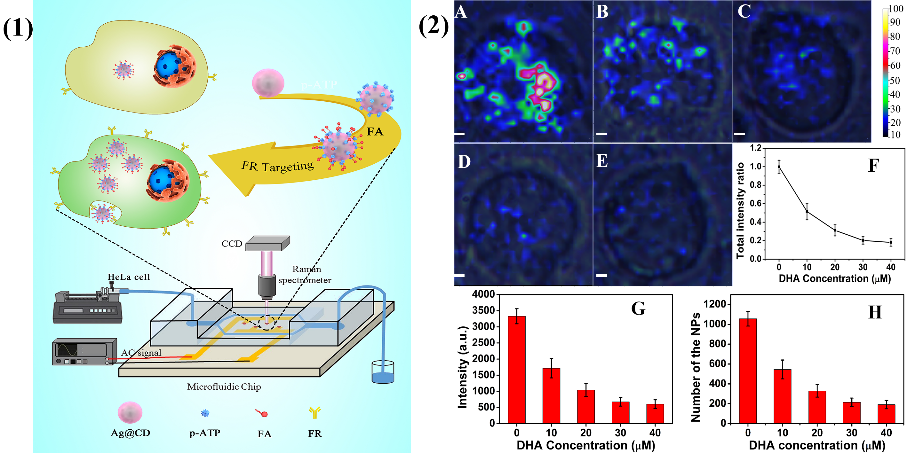
In a paper published in Lab on a Chip, Chinese researchers announced that by using a novel method - Surface-enhanced Raman spectroscopy (SERS) in a microfluidic chip they managed to develop, they can efficiently evaluate the effect of DHA on a single cell, said the research group led by Prof. Huang Qing at Institute of Technical Biology & Agriculture Engineering, Hefei Institutes of Physical Science, Chinese Academy of Sciences.
SERS has emerged as a powerful analytical technique with unique advantages, say, non-destructive measurement, ultrasensitive detection and fingerprint character in the applications such as biosensors, cellular imaging, disease diagnosis and etc.
Dihydroartemisinin (DHA) is a kind of artemisinin derivatives, which has high efficacy towards malaria parasites and some cancers for inhibiting folate receptor (FR) transport and inducing apoptosis of cancer cells.
Therefore, an effective method is in urgent need to quantitatively evaluate the effect of DHA on cancer cells in a well-controlled way.
Aiming at this, HUANG’s team fabricated the nanoparticles (denoted as Ag@CD@p-ATP@FA NPs) with excellent bio-compatibility, water-solubility and water-stability.
The nanoparticles were fabricated as beta-cyclodextrin-coated silver nanoparticles (denoted as Ag@CD NPs) modified with para-aminothiophenol (p-ATP) and folic acids (FA) on the surface.
The p-ATP molecules act as the Raman reporter while the FA tags have high affinity to FR that are over-expressed on the surface of cancerous cells, so that the nanoparticles can target the cancer cells and be monitored by the Raman reporter signal. The number of nanoparticles targeting into the cells depends on the FR population on the surface of the targeted cell.
The researchers applied different doses of DHA onto the HeLa cells, and then measured the Raman reporter signals which stand for the number of nanoparticles targeting to the DHA treated cell, so that the effect of DHA on a single HeLa cell could be determined in a quantitative way.
The experiments were performed in microfluidic chips to ensure that the examined cells were alive during the experiments. The microfluidic chips were provided by the collaborators from University of Science and Technology of China.
This work was supported by the National Natural Science Foundation of China and the National Basic Research Program of China.

Figure 1. (1) Schematic diagram of SERS microfluidic platform. (2) (A–E): The bright-field merged SERS cell images (scale bar: 2 μm) with concentrations of 0 μM (A), 10 μM (B), 20 μM (C), 30 μM (D) and 40 μM (E) of DHA for treatment of 24 h, respectively. (F) Decrease of the SERS intensity in a single cell with the concentration of DHA. (G) Accordingly, the number of NPs entering into the cells as estimated from the curve shown in (F). (H) Correspondingly, the viability of the HeLa cells treated with DHA at different concentrations for 24 h. (Image by ZHAI Zhimin)

86-10-68597521 (day)
86-10-68597289 (night)

52 Sanlihe Rd., Xicheng District,
Beijing, China (100864)

